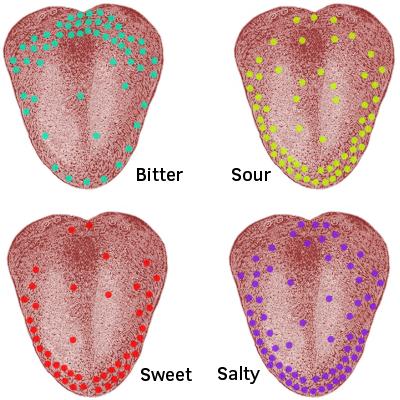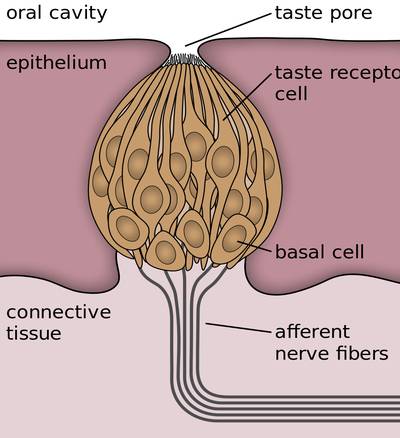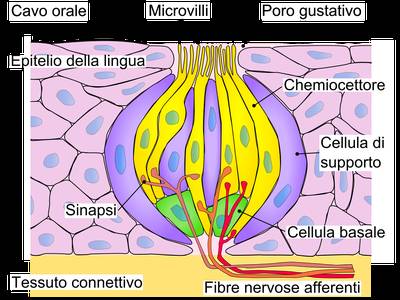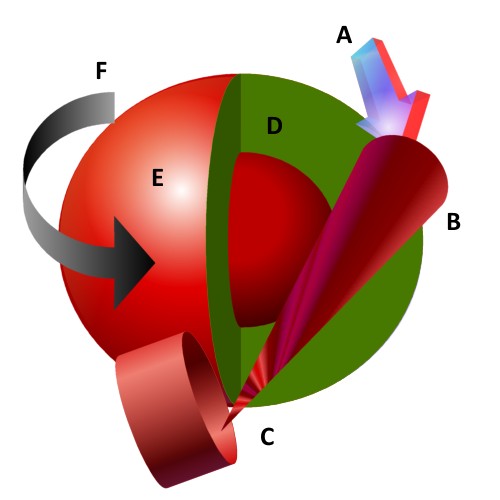Sense of Taste and 思
How it Works and Does Not Work

(PD) The academically accepted tongue receptors of salty, sweet, bitter, and sour. Images' grouping by Larry Neal Gowdy
Copyright ©2023 - November 27, 2023
The sense of taste recently sparked a very interesting conversation about how the perception of taste is parallel to how some individuals sense other senses, including the act of 思 (si) which is an unknown to all known western scholars.
To individuals familiar with physics and 思, the tongue's taste patterns as shown above are obvious of what they imply.
However, as children most all of us were told by teachers to believe that the tongue has many taste buds of which are only able to taste specific molecules as the molecules touch the taste buds. All intelligent students knew that the teachers were lying through ignorance, but, for the goal of avoiding being punished by the teachers, we feigned acceptance of the teachers' pseudo-science. Today, finally, modern sciencians have begun to recognize that the science taught in schools had been wrong.
As quoted within the National Library of Medicine - The National Center for Biotechnology Information (https://www.ncbi.nlm.nih.gov/books/NBK279408/):
"There is a long-held misconception that the tongue has specific zones for each flavor where you can taste sweet or sour, for example, especially well. But this myth is based on an incorrect reading of an illustration of the tongue. You can still find these zones in many textbooks today."
The error of 'flavor zones' existed because sciencians did not know how their own tongues sense taste, and if the sciencians did not previously know how taste occurs, then they cannot know now either. Science and school books were wrong. They are still wrong.
Continued from National Library of Medicine:
"How does our sense of taste work? But what is taste actually? What happens in our body that enables us to perceive flavor? The chemical substance responsible for the taste is freed in the mouth and comes into contact with a nerve cell. It activates the cell by changing specific proteins in the wall of the sensory cell. This change causes the sensory cell to transmit messenger substances, which in turn activate further nerve cells. These nerve cells then pass information for a particular perception of flavor on to the brain."
Regardless of how disturbingly absurd the National Library of Medicine comments are, a typical university biologist will also generally state that food has specific chemical components, and the tongue has specific receptors that are able to physically detect the food's chemicals. The scholars' claims are also obviously false.
As written in the 2009 article Olfactory Perception The Sense of Smell: "I myself have countless questions of current beliefs that appear to not yet have answers. If the nasal cavities commonly have a moist coating, then how is it that the molecules reach the 'lock and key' receptors? Do the molecules burrow through the moisture and mucus? And if so, then why do the receptors not become clogged once the receptors are filled with odorants' molecules?" Similar applies for the tongue's alleged taste pores: how is it possible for the "chemical substance responsible for the taste ...comes into contact with a nerve cell" once the taste buds are filled with food and liquids? The modern science of olfaction and taste is disturbingly amential by how it denies the laws of physics, denies the laws of Nature, denies firsthand observations, and denies commonsense.
Nevertheless, it is very interesting when an item's design illustrates several different attributes simultaneously. The tongue is an excellent example. The patterns of taste receptacles suggest very specific natures that are common within all known living beings. It is unfortunate that biologists are not knowledgeable of physics, else the theories of the sense of taste would include physics-based explanations.
The following two drawings are good representations of the physical appearances of taste bud structuring and microvilli. The 'taste bud' design has obvious implications to everyone who is familiar with any form of natural physics.

(PD) Drawing of a taste bud.

(CC0) Drawing of a taste bud.
The intriguing item is that scientists and academicians do not see the obvious. Without an individual having 思, the individual cannot mentally grasp what a taste bud is. Parallel is the ability for natural calculus, as is suggested in the following graphic.

(©2017 Larry Gowdy) Natural Calculus
Individuals with 思 are easily able to perform the natural calculus; it is their natural and always-present method of 'thinking'.
The inability for scientists and academicians to recognize what a taste bud is, nor to recognize taste patterns, permanently proves that they have no 思, which permanently prevents all of the scientists and academicians from ever being capable of reading ancient Chinese words.
The absence of 思 also permanently prevents inner qualities such as virtue, benevolence, and love. The scientists' lists of emotions also prove that the scientists and academicians do not have 思, and have no potential of ever attaining the ability to care about other people. Pathological science's psychopathy is the natural result.
The sum is that the scientific claims about the sense of taste are excellent illustrations that the scientists themselves have no idea of how the sense of taste (nor any other sensory perception) occurs, and that the scientists and academicians also have no 思.
Irrefutable Proof That the Science of Taste Is False
As has been recorded above, according to what all known scientists, biologists, and government employees claim, it is impossible to taste anything that does not come into physical contact with the tongue. The popular belief is, of course, false. There are two easy examples that prove the popular belief to be false.
[1] While standing a few feet from another person, I can hold out my hand towards the side of a person's closed mouth, and the person will taste my hand more strongly than if their tongue were in physical contact with the hand's skin. (A quick lesson learned was to always thoroughly wash my hands before performing the act!) The little act permanently proves that the tongue does not sense taste by the physical contact of chemicals.
[2] An object can be held several inches from a person's closed mouth, and the person will taste the object extremely more strongly than if the object were in their mouth. When holding the object within a couple inches of the person's closed mouth, the person will feel the radiance of the object passing through the person's gums (analogously, the felt sensation is sort of like feeling a flux of air). Again, the little act permanently proves that the tongue does not sense taste by the physical contact of chemicals.
I myself recognized the effect as a child, but I did not research the effect further until recent years. The effect has been repeatedly proven to be useful for health applications of relieving pain (i.e. eliminating sciatic nerve pain (that no doctor nor drug could alleviate in over five years of trying), and do so in less than five minutes), healing infections (i.e. abscessed gums while almost immediately relieving tooth pain), eye problems in under two minutes, and a long list of other medical treatments than cannot be achieved with modern medicine.
Noteworthy is that all known living creatures make use of similar designs and effects: the evidence is literally obvious everywhere in Nature, but sciencians and academicians are incapable of comprehending what they see.
Sum
If modern science's claim of the sense of taste were true, then no one on earth could taste anything that is outside of their mouth, nor would anyone be able to sense a wide variety of tastes that exceeds the numbers of taste buds. People are able to taste more flavors than taste buds, and people are able to taste objects outside of their mouths, which permanently and eternally proves 100% of the science of taste to be pathological science.
The sense of taste is similar to the sense of smell; no scientist, nor biologist, nor academician, nor government employee knows what the sensory perception is because none of the individuals have 思, and thus the individuals are fully and permanently incapable of rationalizing what sensory perceptions are.
An interesting sentence is 神之格思不可度思矧可射思 from Zhong Yong 16 / 抑 - Yi 7: 'Spirit it pattern 思, not able measure 思, powerful able emit 思'. Christian missionary and Oxford University sinology employee James Legge translated the sentence as "The approaches of spiritual Beings, Cannot be calculated [beforehand]; But the more should they not be slighted." It is obvious that Legge had no concept of what 'spirit' is, nor a concept of what 思 is, nor a concept of what any other Chinese word means, nor so much as held a concept of what his own English words meant. Legge's translation is apropos for individuals who have no 思: their mentality is fixated on external appearances and external behaviors, while having no mental concept of anything existing on the inside. It is the universal behavior of western philosophy, academia, and science.
Often it is not what people say that proves their mentality, but rather it is what the people do not say. Within western cultures, never has the concept of 思 been spoken of within any field related to science.
The tongue diagrams prove it to be so.
This article was written the day prior to discovering that a relatively new philosophical theory of the mind is currently in vogue. The new theory is discussed within A Critique of Aphantasia, Hypophantasia, Phantasia, Hyperphantasia - The Degrees and Types of Ability to See or to Not See Images in One's Mind. The theory's claims further help to explain why sciencians, biologists, academicians, and government employees have no 思, and are unable to rationalize topics.